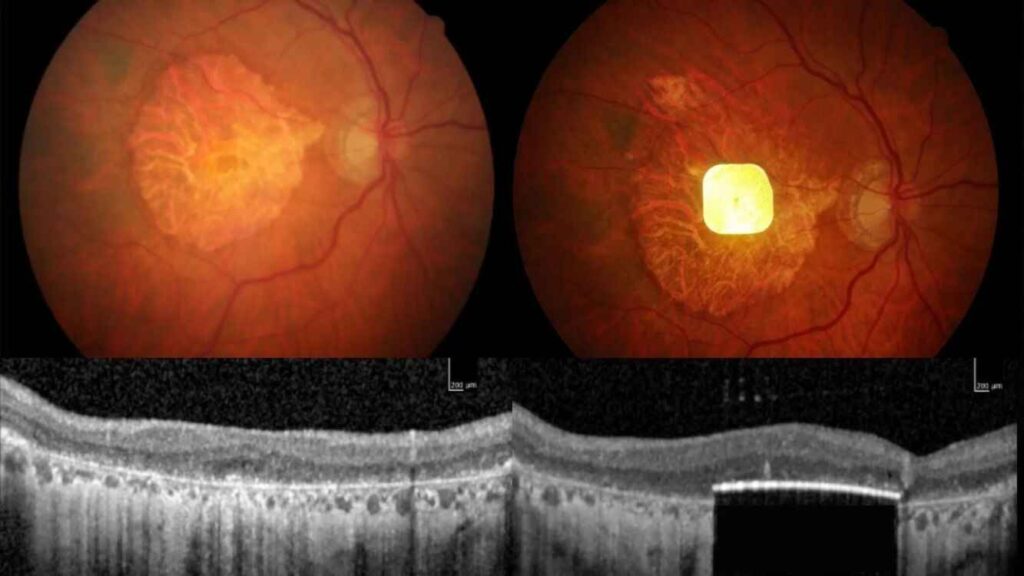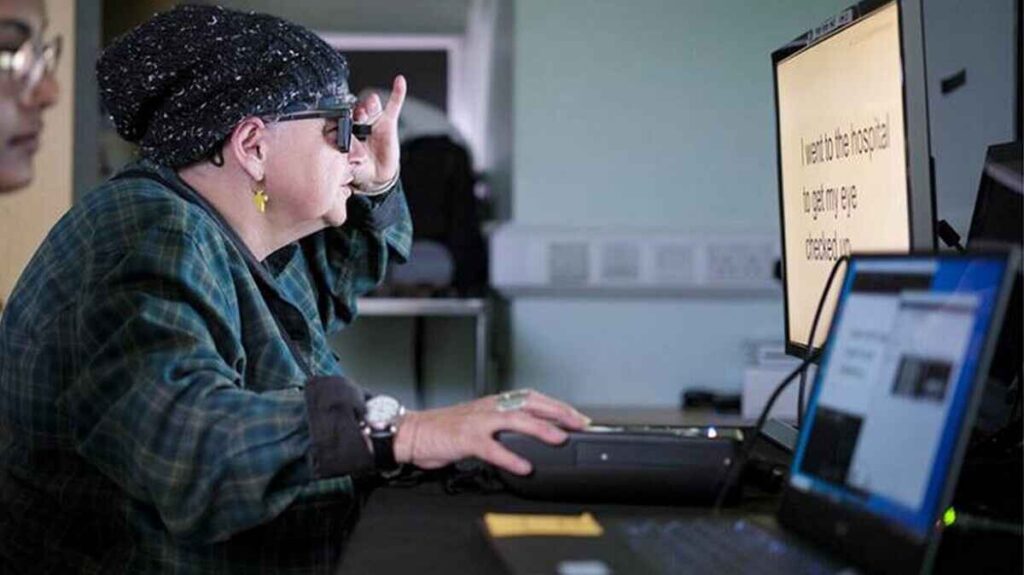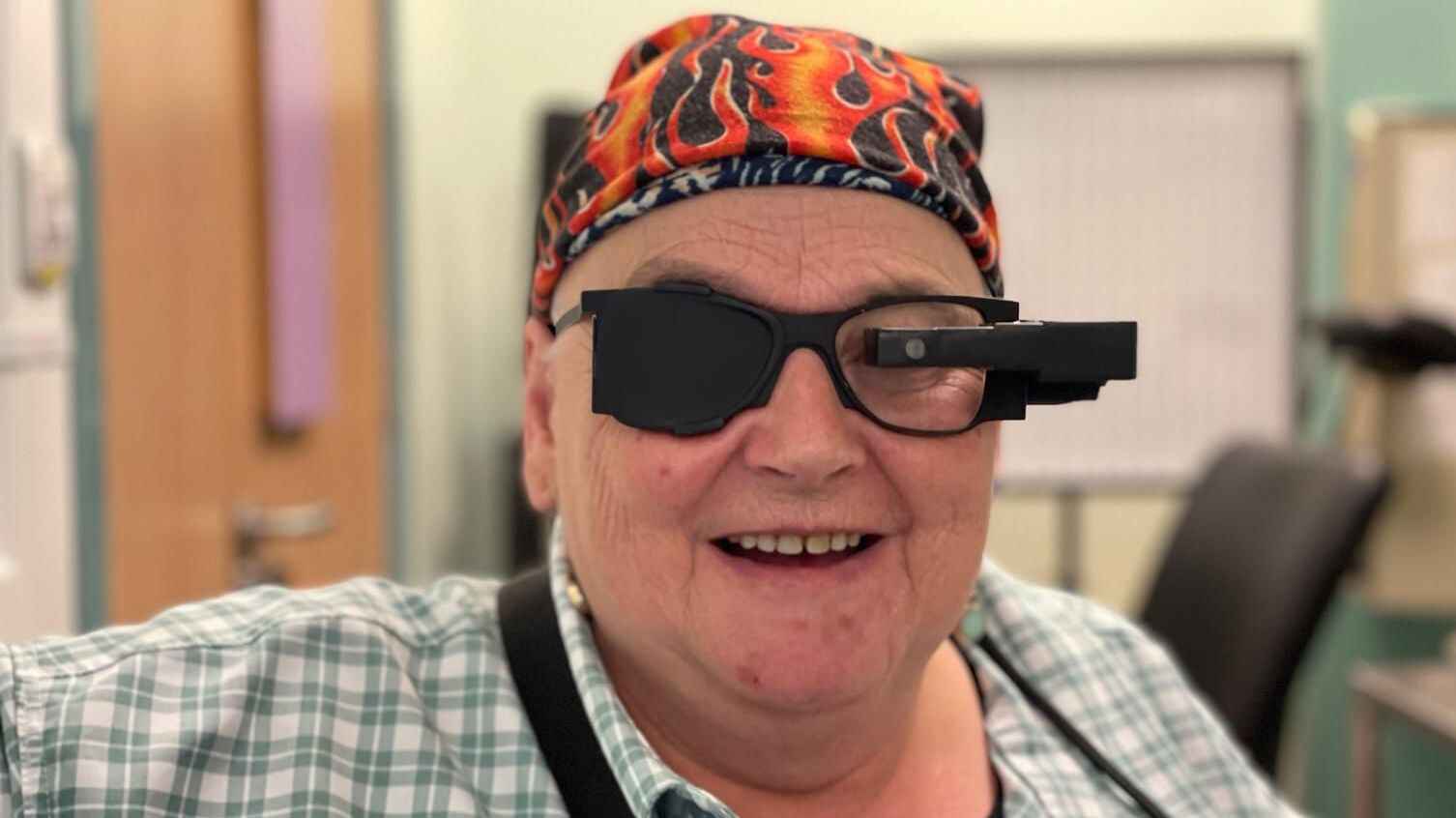- 84% of participants regained central sight in European clinical trial
- AI-driven implant and augmented reality glasses restore reading ability to blind patients
- Study published in The New England Journal of Medicine
- Device known as PRIMA uses a microchip, AR camera, and neural processing
- No loss of peripheral vision recorded; safe two-hour procedure
In a revolutionary leap for medical technology and vision science, researchers have restored reading vision to people who were once blind using a combination of a microchip eye implant and augmented reality (AR) glasses. The innovation, called the PRIMA System, is being hailed as a “new era” for artificial vision and sight restoration.
According to a publication serving as results so far by The New England Journal of Medicine, revealed that 84% of the 38 participants, all suffering from untreatable geographic atrophy linked to dry age-related macular degeneration (GA in dry AMD) were able to read letters, numbers, and even words through prosthetic vision.
Out of 38 participants who received the PRIMA implant, 32 were evaluated after 12 months. Six couldn’t be assessed, three had died, one withdrew, and two were unavailable. Among those evaluated, 26 people (81%) showed a clinically meaningful improvement in visual acuity from baseline (P<0.001).
Again, after accounting for missing data, researchers estimated that about 80% of all participants would have shown similar improvement at 12 months.
The publication added that, there were 26 serious adverse events reported in 19 participants, with 81% occurring within two months after surgery; 95% of those resolved within the same timeframe. Overall, participants’ natural peripheral vision remained unchanged after implantation.
The breakthrough technology merges AI-driven image processing, neural engineering, and augmented reality optics. The PRIMA implant, a wafer-thin microchip about the size of a SIM card, is placed in the retina through a precise surgical procedure lasting under two hours. It connects with a camera embedded in AR glasses, which captures the visual field in infrared light.
A small computer worn at the waist processes the data using artificial intelligence algorithms that convert images into electrical impulses. These impulses travel along retinal and optic nerve pathways to the brain, where they’re interpreted as vision. Patients can use zoom and focus tools on their AR glasses to enlarge text and navigate visual scenes.

“In the history of artificial vision, this represents a new era,” said Mr. Mahi Muqit, associate professor at University College London’s Institute of Ophthalmology and consultant at Moorfields Eye Hospital. “Blind patients are actually able to have meaningful central vision restoration, which has never been done before.”
He added that regaining reading ability has a profound impact on patient independence and confidence: “Getting back the ability to read is a major improvement in their quality of life, lifts their mood and helps to restore their confidence and independence.”
The operation, according to Muqit, can be performed safely by any trained vitreoretinal surgeon, which could make it widely accessible to millions of patients worldwide once approved by regulators such as the FDA and EMA.
Dry AMD is one of the leading causes of blindness among older adults, progressively destroying light-sensitive macular cells. There are currently no licensed treatments for geographic atrophy, which affects an estimated five million people globally.
The PRIMA implant offers new hope. Trial participants reported dramatic improvements, including the ability to read again after years of blindness. One patient, Sheila Irvine, shared her emotional experience:
“Before receiving the implant, it was like having two black discs in my eyes, with the outside distorted. I was an avid bookworm, and I wanted that back. It’s a new way of looking through your eyes, and it was dead exciting when I began seeing a letter. It’s not simple, learning to read again, but the more hours I put in, the more I pick up.”

Developed by Science Corporation, a company specializing in brain-computer interfaces and neural engineering, the PRIMA System has shown no decline in existing peripheral vision, an important milestone in ophthalmic innovation.
The multinational trial was led by Dr. Frank Holz of the University of Bonn, with patient groups across the UK, France, Italy, and the Netherlands. Researchers say the success of this study opens the door for future clinical applications in treating other degenerative eye diseases.
“I think it’s something that, in future, could be used to treat multiple eye conditions,” Muqit noted, emphasizing the wider potential for AI-assisted vision restoration technologies.
As medical innovation and augmented reality converge, the promise of restoring sight is no longer a distant dream, it’s now a tangible medical achievement, paving the way for the next generation of neuro-ophthalmology and AI healthcare technology.
Also Read: 10-Year-Old Girl Scores Top 1% IQ After Dyslexia Test, Invited to Join Mensa












